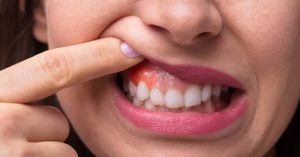
Nội dung bài viết / Table of Contents
This post is also available in: Tiếng Việt (Vietnamese)

Periodontitis is a severe gum infection that can harm the soft tissue and damage the bone which supports your teeth. Periodontitis can result in tooth loss or even a high risk of heart attack or stroke and other serious health problems.
Periodontitis is common but largely preventable. Periodontitis is usually the result of poor oral hygiene.
Signs and symptoms of periodontitis can include:
There are different types or classes of periodontitis. Chronic periodontitis is the most common class, affecting mostly adults, though children can be affected, too. Aggressive periodontitis usually begins in childhood or early adulthood and affects only a small number of people.
There may be some signs or symptoms not listed above. If you have any concerns about a symptom, please consult your doctor or pharmacist.
You can try these measures to reduce periodontitis:
Healthy gums are firm and pale pink. If your gums are puffy, dusky red and bleed easily, or show other signs or symptoms of periodontitis, see your dentist soon. The sooner you seek for dental care, the better your chances of reversing damage from periodontitis, potentially preventing other serious health problems.
Read more post:
The best way to prevent periodontitis is to set up and follow a well-planned hygiene schedule. That means brushing your teeth at least twice everyday — in the morning and before going to bed — and flossing at least once a day. Better yet, brush after every meal or snack or as your dentist recommends.
A complete cleaning with a toothbrush and floss should take three to five minutes or so. Flossing before you brush allows you to clean away the loosened food particles and bacteria.
Also, see your dentist or dental hygienist regularly for cleanings, usually every six to twelve months. If you have risk factors that increase your chance of developing periodontitis — such as having dry mouth, taking certain blood pressure medications or smoking — you may need professional cleaning more often.
Sources: